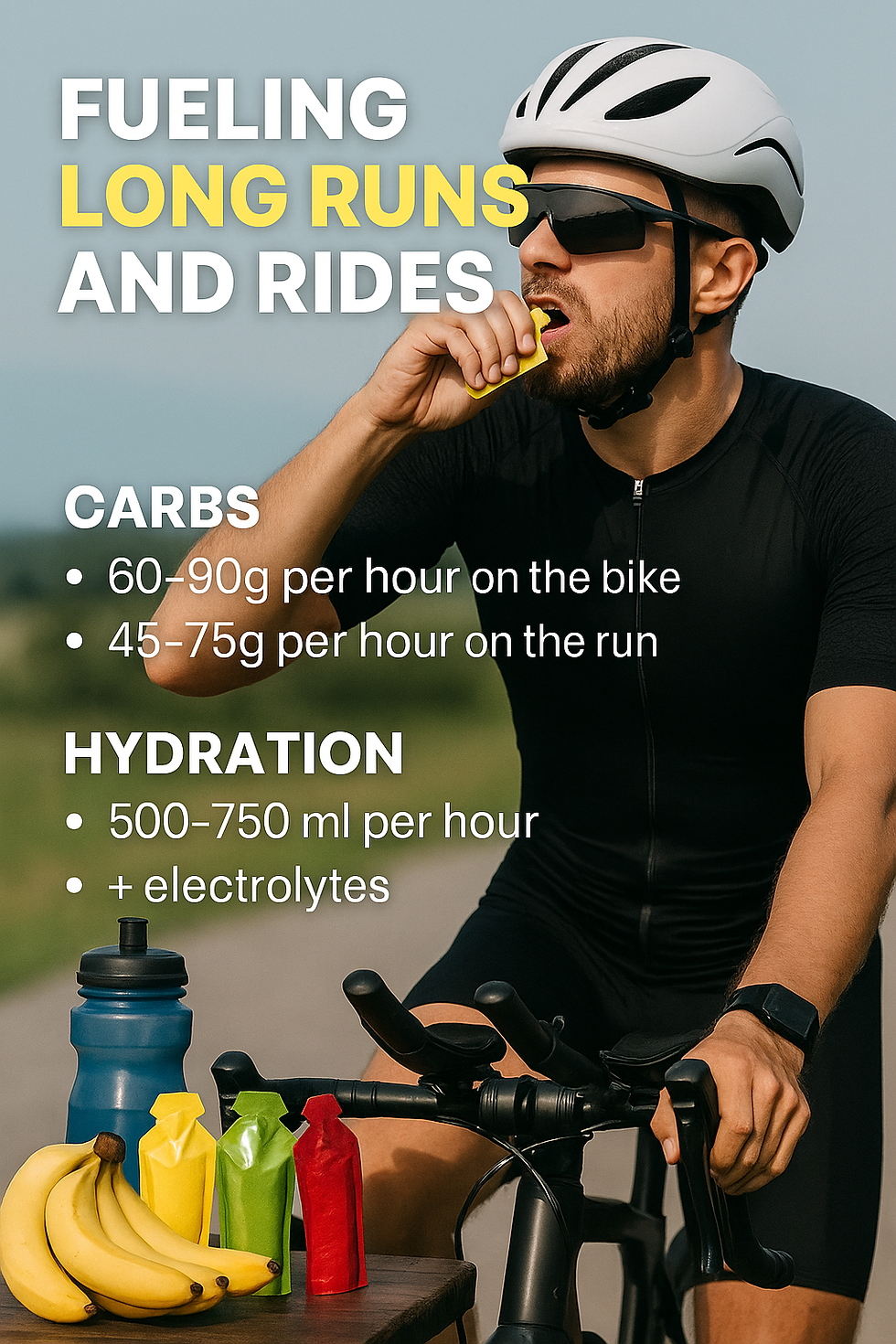Triathlon Training Zones Explained: Train Smarter with the 5-Zone System
- TriWise Coach
- Nov 7
- 3 min read
If you want to train like the best triathletes in the world, you need to understand your training zones.They’re the foundation of every smart training plan — guiding how hard to go, when to recover, and how to get faster without burning out.
At TriWise, we use the five-zone training model to help athletes build endurance, strength, and speed efficiently.Let’s break it down.
What Are Training Zones?
Training zones are intensity levels based on heart rate, pace, or power output.They help you understand what’s happening inside your body — which energy systems you’re using, and what adaptations you’re creating.
Each zone serves a specific purpose. Training too often in the wrong zone leads to wasted effort, fatigue, or missed potential.But train with precision, and every session moves you closer to your goals.
Zone 1 – Recovery (50–60% of Max Effort)
This is your easy zone — used for recovery rides, relaxed runs, or warm-ups and cool-downs.
Feels: Light, comfortable, can easily hold a conversation
Purpose: Promote recovery, build aerobic foundation without stress
Example: A 30–45 min easy spin the day after a long brick workout
Zone 2 – Endurance (60–70% of Max Effort)
The engine-building zone. This is where triathletes should spend most of their training time.
Feels: Sustainable, steady breathing, still conversational
Purpose: Build aerobic base, improve fat metabolism, enhance endurance
Example: Long bike rides or steady long runs — 60–90 minutes
💡 Most elite endurance athletes spend up to 80% of their training in Zone 2.
Zone 3 – Tempo (70–80% of Max Effort)
Zone 3 is your gray zone — moderately hard, but sustainable for longer periods.
Feels: Steady but challenging; can say short phrases
Purpose: Improve muscular endurance and pace control
Example: 40–60 min tempo ride or run, or the middle section of a brick session
Zone 4 – Threshold (80–90% of Max Effort)
This is your race-intensity zone — where speed and stamina meet.
Feels: Breathing is strong and controlled; conversation is difficult
Purpose: Improve lactate threshold and ability to sustain high effort
Example: 4 x 10 min threshold intervals on the bike or run with recovery between sets
Zone 5 – VO₂ Max (90–100% of Max Effort)
The top-end zone that boosts your speed and power.
Feels: Very hard, short bursts only, rapid breathing
Purpose: Increase aerobic capacity and top-end performance
Example: 6 x 3 min hard intervals on the bike or run with full recovery
Matching Zones to Your Goals
Each triathlon distance and athlete goal requires a different blend of training zones:
Sprint & Olympic → more Zone 4–5 work for speed and power
70.3 & Ironman → mostly Zone 2 with strategic Zone 3–4 for durability and race pace
Beginners → start with Zones 1–2 to build a base safely
That’s where TriWise makes the difference — combining AI precision with coach insight to find your perfect zone balance.
How TriWise Uses Zones in Your Plan
Our AI analyses your current fitness, feedback, and recovery data to calculate optimal training intensity.Then, our coaches review and adjust based on your goals, experience, and race calendar.
Every plan includes:
Zone-calibrated workouts (bike, run, swim, strength)
Recovery days matched to your training stress
Periodized structure for progressive, sustainable improvement
This ensures every session has purpose — no junk miles, no burnout.
Ready to Train Smarter?
Whether you’re chasing your first triathlon finish or your next podium, understanding your training zones is the key to unlocking your best performance.
Get your personalized TriWise training plan today — built with AI precision, refined by real coaches.



Comments